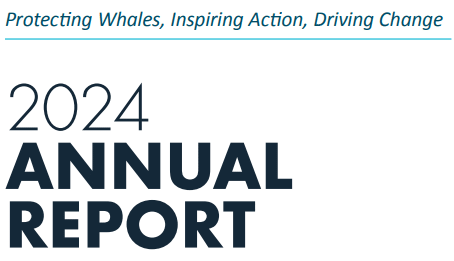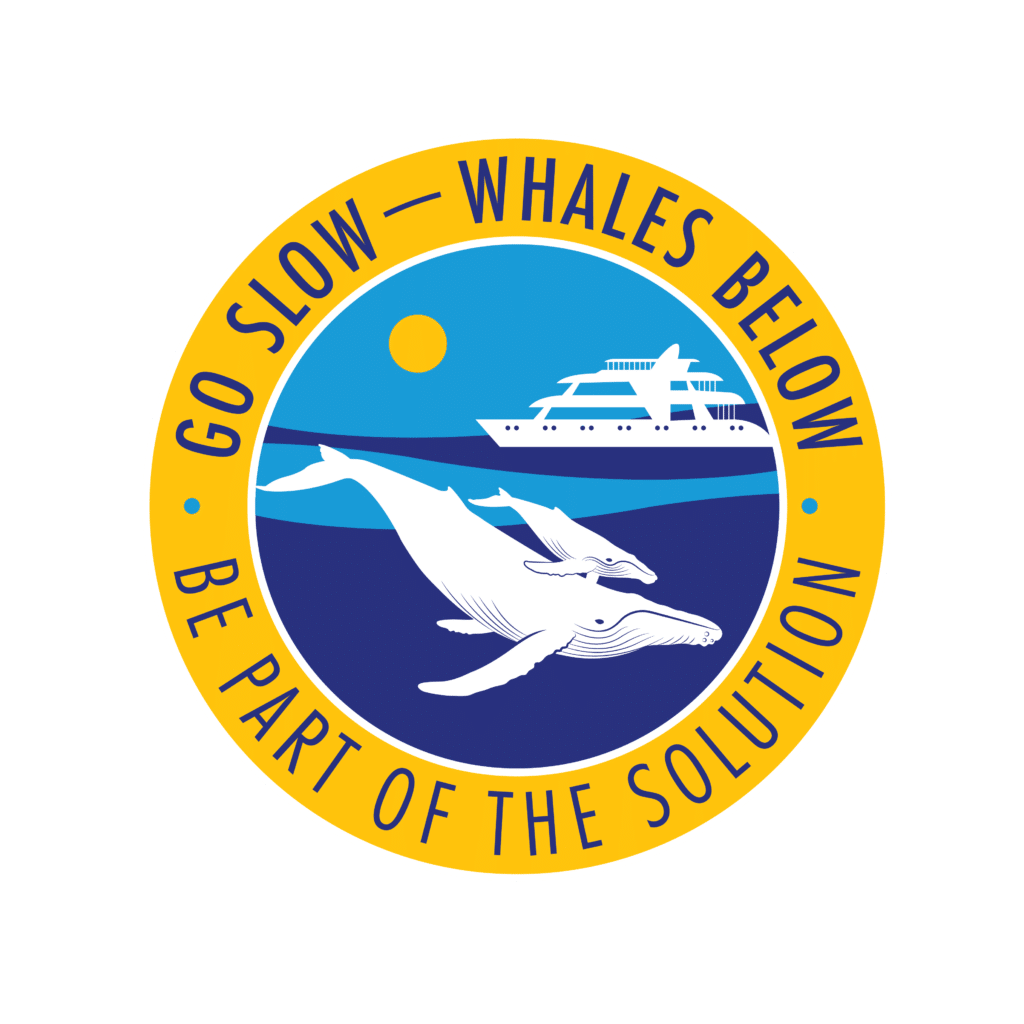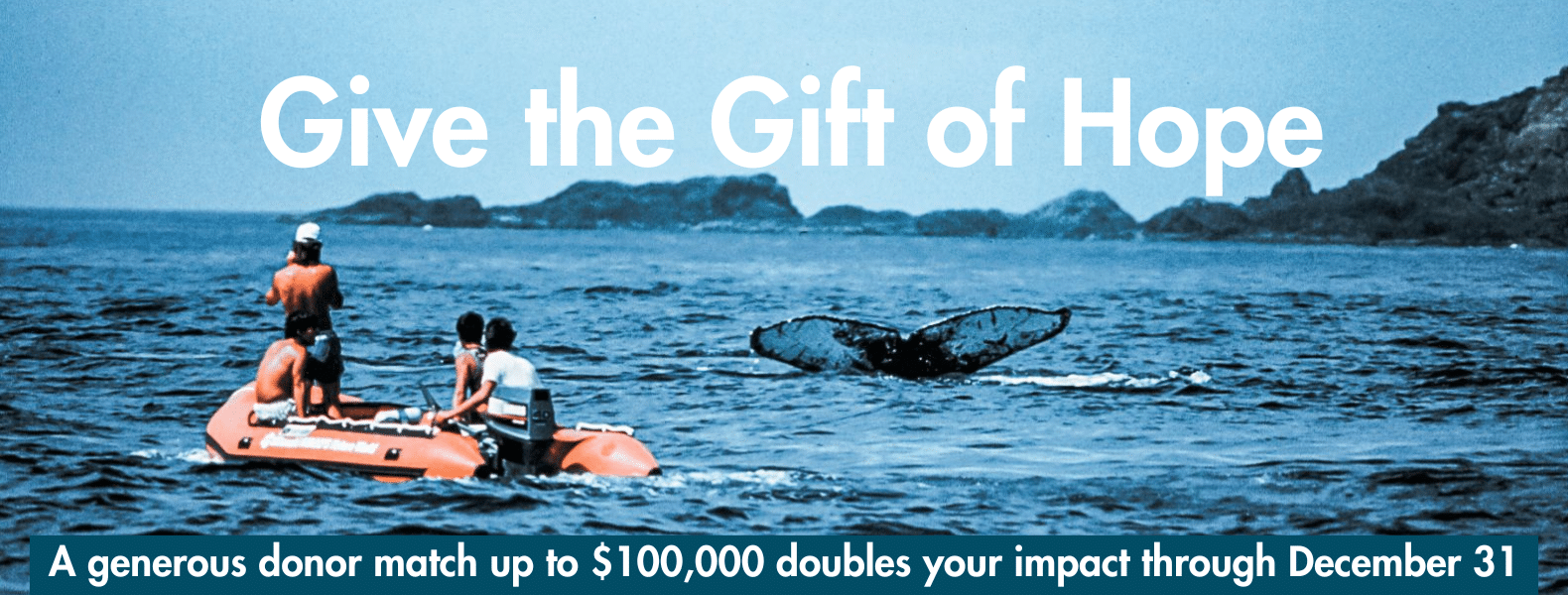Conservation IN Motion
Whale Watch Guidelines put research into practice, guiding safe, ethical interactions with whales in the wild.
Marine mammals often engage in important social and behavioral activities that may not be apparent to a casual viewer. Approaching these animals too closely or too quickly may disrupt these behaviors and cause unnecessary stress. Do not attempt to touch, feed or swim with whales, dolphins, sea turtles or other marine wildlife as this could be dangerous for the animal and for you. Vessel collisions with marine animals and unsustainable tourism practices are among the major threats to whales and dolphins, as identified by PWF researchers through years of research.
Go Slow – Whales Below
Between November and May, thousands of humpback whales migrate annually to the Hawaiian Islands. While residents and visitors alike enjoy viewing humpback whales in their natural habitat, it is important to remember that our presence can affect marine wildlife and habitat.
Representatives from PWF, Hawaiian Island Humpback Whale National Marine Sanctuary, DLNR-Division of Aquatic Resources, DLNR-Division of Boating and Ocean Recreation, the Hawaiian Islands Humpback Whale National Marine Sanctuary Advisory Council, tour boat operators, such as PWF’s social enterprise PacWhale Eco-Adventures, and invested members of the community have worked on the set of recommendations to keep both whales and watchers safe.
Read the Go Slow – Whales Below guidelines at GoSlowWhalesBelow.org.

False Killer Whale Hotline: 888-256-9840
Hawai’i is home to a population of false killer whales (Pseudorca crassidens) that is listed as endangered under the Endangered Species Act (ESA). Current estimates indicate that there are less than 200 individuals in the population. PWF researchers have made false killer whales a priority species to study, but their low numbers and wide-ranging habitat (all of the Main Hawaiian Islands) makes it difficult to encounter them regularly during field work. To increase the opportunity to study this species PWF launched a False Killer Whale Rapid Response Program which is activated whenever someone who sees a false killer whale in Maui nui waters calls 888-256-9840. When this hotline is activated, if conditions allow, PWF researchers will launch their dedicated research boat, Kaiao, to attempt to intercept and collect much-needed scientific data.
Use our Blackfish ID card to help identify false killer whales and learn more about them.
Spinner Dolphin Approach Limit
Spinner dolphins are especially vulnerable to disturbance by humans because they tend to congregate in shallow bays during the day time. Spinner dolphins use these areas to rest in order to go out at night to feed. Any disturbance of their rest may cause them to have less energy to feed which is critical to the fitness of the dolphins and could cause them to be less able to reproduce.
In October 2021, NOAA Fisheries finalized a rule under the Marine Mammal Protection Act to prohibit swimming, approaching or remaining within 50 yards of a Hawaiian spinner dolphin. The rule applies to any vessel, person, or object.
For more dolphin safety recommendations and regulations, click the dropdown for your area below.
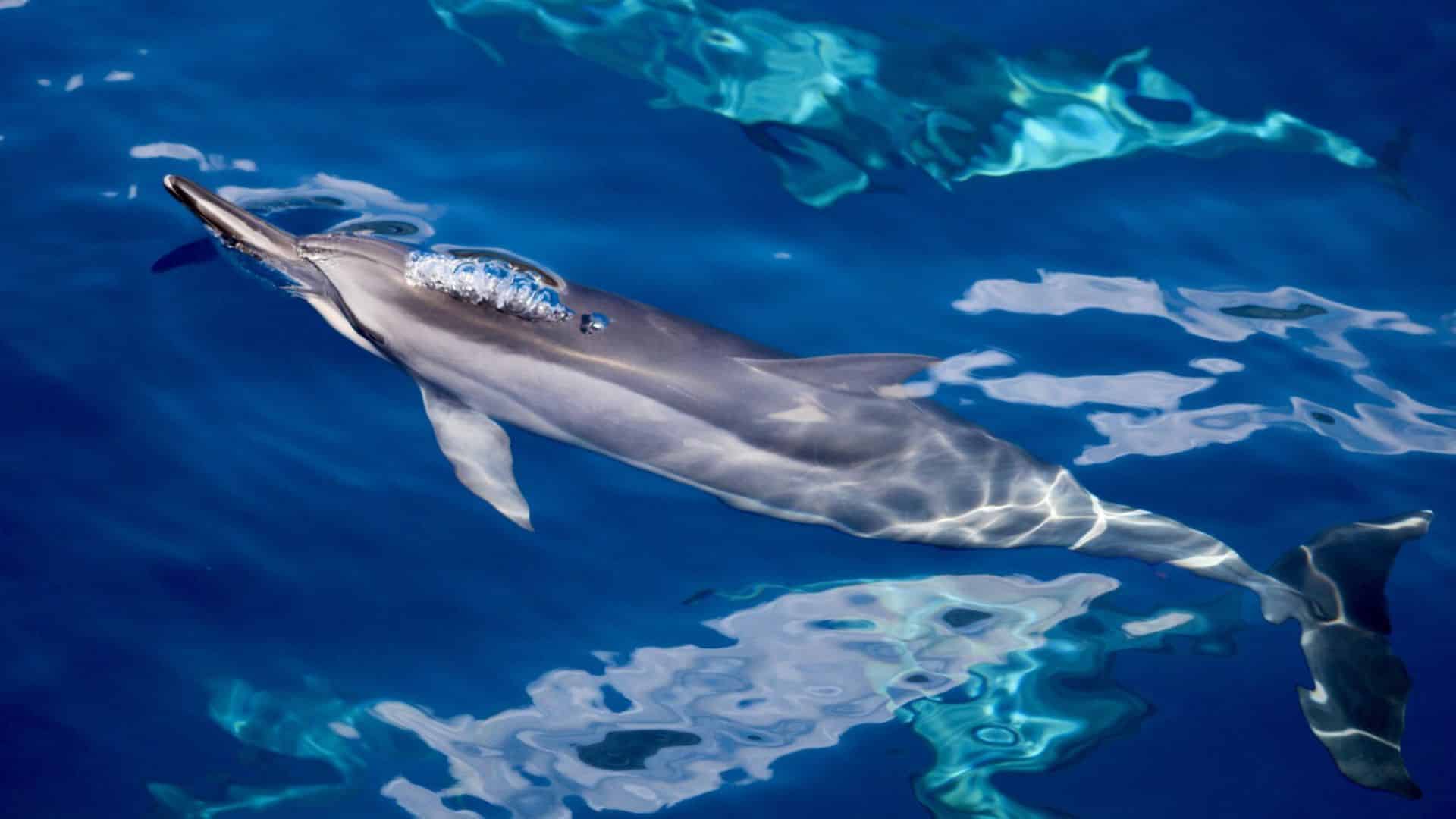
Location Guidelines
Sea Turtle Guidelines
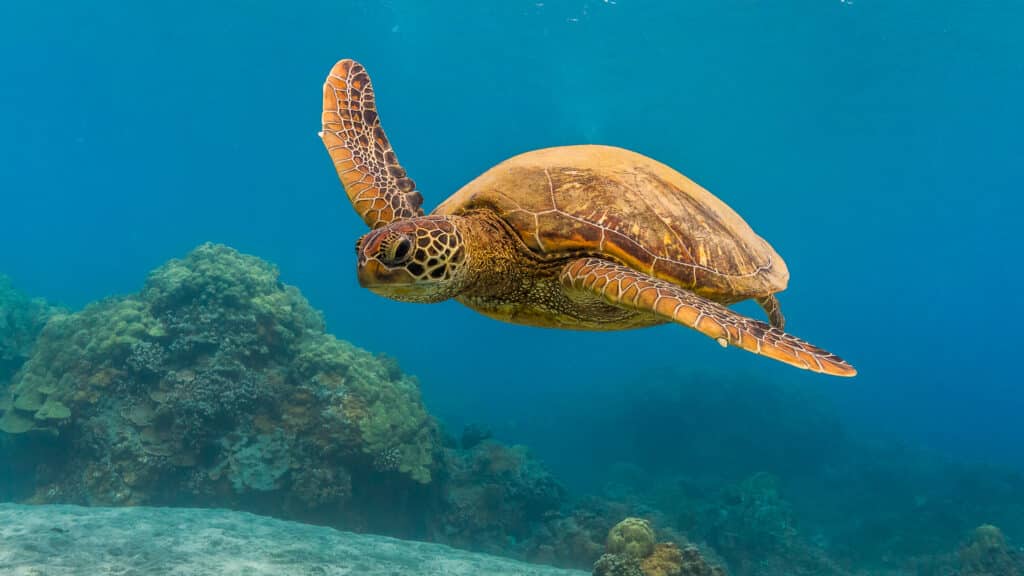
Sea turtles are air-breathing reptiles. As it is illegal to harass them, enjoy them from a distance of at least 10 feet and do not block their path as they surface to breathe. Do not touch, feed or attempt to hold or ride a sea turtle.
Monk Seal Guidelines

Monk seals are a protected species. If you encounter one in the ocean, you should immediately move to a different location. Approaching or attempting to play or swim with them may alter their behavior and their ability to fend for themselves in the wild. Monk seals regularly haul out to rest on beaches and shores. If you see a monk seal on land, please stay at least 50 feet away (150 feet if there is a pup present). Report all sightings of monk seals on land to NOAA’s Marine Mammal Hotline: 1-888-256-9840.
Coral Reef Guidlines

Corals are delicate living organisms. Damaging just one square inch of coral could undo hundreds of years of growth. Refrain from standing on or kicking reefs as this can easily kill the coral. If you plan on going into the water, be sure to use reef-safe sunscreen only and apply at least 20 minutes prior to entering the water.
Marine Mammal Hotlines

To report any injured, entangled, stranded or distressed marine wildlife, call NOAA Fisheries Marine Mammal (24-hour) Hotline: 1-888-256-9840. Please call immediately and do not attempt to help the animal yourself. Animals under stress can be unpredictable and dangerous.
To report violations of the 100-yard approach rule for humpback whales, or other human disturbance or harassment of marine life, call the NOAA Enforcement (24-hour) Hotline: 1-800-853-1964.
